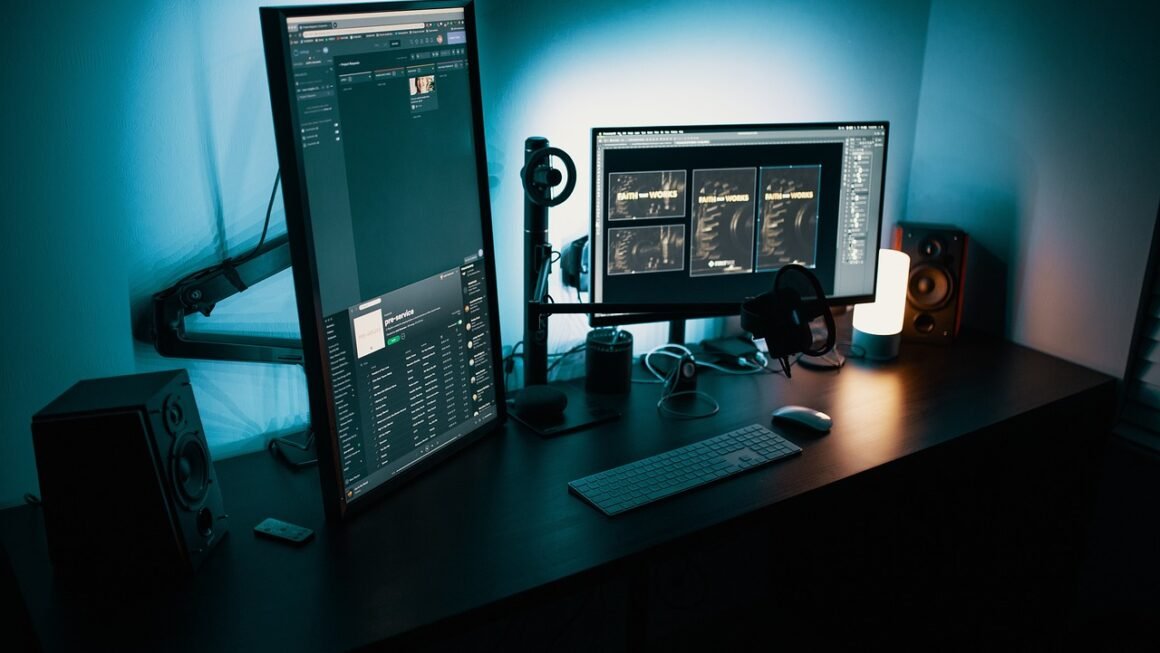Augmented reality (AR) is rapidly transforming how we interact with the world around us, blending digital elements with our real-world perceptions. From interactive shopping experiences to enhanced training simulations, AR is no longer a futuristic fantasy but a tangible technology with countless applications. This blog post will delve into the intricacies of augmented reality, exploring its applications, benefits, and potential impact on various industries.
What is Augmented Reality?
Defining Augmented Reality
Augmented reality enhances our real-world environment by overlaying digital information onto it. Unlike virtual reality (VR), which creates a completely immersive digital environment, AR uses existing surroundings and adds layers of digital content. This could involve projecting images, animations, or data onto the physical world, accessible through devices like smartphones, tablets, or specialized AR glasses.
How Augmented Reality Works
The core of AR technology relies on several key components working in tandem:
- Sensors: These capture information about the real-world environment, such as depth, movement, and location.
- Tracking: Software algorithms track the position and orientation of the device in relation to the environment. Technologies like SLAM (Simultaneous Localization and Mapping) play a crucial role.
- Projection: Digital content is projected onto the real-world view, often through a display on a device or specialized AR glasses.
- Processing: Powerful processors are needed to analyze sensor data, track movement, and render digital content in real-time.
Key Differences: Augmented Reality vs. Virtual Reality
It’s crucial to distinguish between AR and VR:
- Augmented Reality (AR): Enhances the real-world environment. Users remain aware of their surroundings.
- Virtual Reality (VR): Creates a completely immersive digital environment. Users are isolated from the real world.
Applications of Augmented Reality Across Industries
Retail and E-commerce
AR is revolutionizing the retail sector by offering immersive shopping experiences.
- Virtual Try-On: Customers can virtually “try on” clothes, accessories, or makeup before making a purchase.
Example: Sephora’s Virtual Artist app allows users to virtually try on different makeup products using their smartphone camera.
- AR Furniture Placement: Users can visualize how furniture will look in their homes before buying it.
Example: IKEA Place app lets users place 3D models of furniture in their rooms using their smartphone.
- Enhanced Product Information: Scanning product packaging with an AR app can reveal detailed information, reviews, and even interactive demonstrations.
Healthcare and Medicine
AR is improving training, diagnosis, and treatment in healthcare.
- Surgical Training: AR simulations allow surgeons to practice complex procedures in a safe and realistic environment.
- Medical Visualization: AR can overlay anatomical models onto patients’ bodies, assisting surgeons during operations.
- Patient Education: AR apps can educate patients about their conditions and treatments through interactive visualizations.
Example: AccuVein uses AR to project a map of veins onto the patient’s skin, making it easier for nurses to find veins for injections.
Education and Training
AR is transforming learning by creating interactive and engaging educational experiences.
- Interactive Textbooks: AR can bring textbooks to life with 3D models, animations, and interactive quizzes.
- Virtual Field Trips: Students can explore historical sites or distant lands through immersive AR experiences.
- Skill Development: AR can be used to train employees in various skills, from equipment maintenance to customer service.
Example: A construction company could use AR to train workers on how to operate heavy machinery in a safe and controlled environment.
Manufacturing and Engineering
AR is optimizing processes, improving efficiency, and reducing errors in manufacturing and engineering.
- Remote Assistance: Experts can guide technicians through complex repairs using AR annotations and real-time video.
- Assembly Instructions: AR can overlay step-by-step instructions onto physical equipment, streamlining assembly processes.
- Quality Control: AR can identify defects and inconsistencies during the manufacturing process, ensuring high-quality products.
Benefits of Implementing Augmented Reality
Enhanced User Engagement
AR creates engaging and interactive experiences that capture users’ attention and increase their involvement.
- Gamified experiences
- Interactive storytelling
- Personalized content delivery
Improved Efficiency and Productivity
AR can streamline processes, reduce errors, and improve overall efficiency in various industries.
- Faster training times
- Reduced operational costs
- Improved accuracy and precision
Better Decision-Making
AR provides users with real-time data and visualizations that support informed decision-making.
- Data overlay on real-world objects
- Predictive analytics
- Real-time insights
Competitive Advantage
Companies that adopt AR early can gain a competitive advantage by offering innovative products and services.
- Differentiation from competitors
- Enhanced brand image
- Increased customer loyalty
Getting Started with Augmented Reality
Choosing the Right Platform
Several AR platforms are available, each with its own strengths and weaknesses.
- ARKit (Apple): Developed by Apple for iOS devices. Offers robust tracking and rendering capabilities.
- ARCore (Google): Developed by Google for Android devices. Provides similar features to ARKit but for a wider range of devices.
- Vuforia: A cross-platform AR SDK that supports both iOS and Android. Offers advanced image recognition and tracking capabilities.
Developing AR Content
Creating AR content requires specialized skills and tools.
- 3D Modeling: Creating 3D models of objects and environments.
- AR Development SDKs: Using ARKit, ARCore, or Vuforia to integrate digital content with the real world.
- Game Engines: Using game engines like Unity or Unreal Engine to create interactive AR experiences.
Practical Tips for Successful AR Implementation
- Focus on User Experience: Design AR experiences that are intuitive, engaging, and easy to use.
- Optimize for Performance: Ensure that AR apps run smoothly on target devices by optimizing 3D models, textures, and code.
- Test Thoroughly: Conduct extensive testing to identify and fix bugs before launching AR apps.
- Prioritize Privacy: Be transparent about how AR apps collect and use user data.
Conclusion
Augmented reality is poised to revolutionize various aspects of our lives, from the way we shop and learn to how we work and interact with the world. By understanding its core concepts, exploring its diverse applications, and implementing it strategically, businesses and individuals can unlock the immense potential of AR and gain a competitive edge in the rapidly evolving digital landscape. Embrace augmented reality and step into a future where the digital and physical worlds seamlessly merge.



